*_______________*
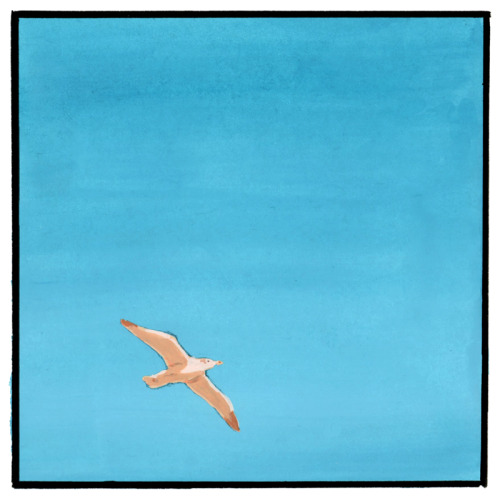



*_______________*
More Posts from Lune-versatile and Others
Do you have any tips for doing nanowrimo for the first time? Or any tips in general?
I do actually. Kind of a lot of tips. But when I have a lot of things to say about something that people would need to take action on, I like to do bullet points to organize the information so it’s easier to digest.
So.
Bullet point time.
Start now. No I don’t mean starting the story. That’s the challenge, to write all the new words in November. I mean, start THINKING about your story. Start planning. Start brainstorming. Start character development. Start backstory. Start researching. Start your writing habit. Because writing at that level take training. You have to get INTO it. It’s far too hard to start writing a novel cold if you’re not used to writing.
Make An Outline. Okay. This is a choice. Not everyone likes outlines. In nanowrimo, we say there are two types; Planners who outline their novel and Pantsers who write by the seat of their pants. This can also be called “intuitive writers.” I think there’s a third, a combo of the two. Plantsers. I like that word because not only is it a combo of pantser and planner, it also has the word “plant” in it. So you plant your garden in a plan and then let it grow however it wants, intuitively. That’s me. Anyway. If you don’t want to plan an outline because you’re a pantser, take notes on your story. Do character interviews, research back story, get excited about tropes you want to use, write short stories about the characters, take notes and make lists about ideas you have.
Start a vision board for your story. I use pinterest. Here is an example of my vision board for one of my nano novels that has already been through three drafts, so...years. I’m REALLY into pinterest do no be intimidated. I’ve been doing it a long time. Keep track of characters, settings, ideas, research, advice. It gets a different version of my brain working on my story.
Sign up at the nanowrimo site. Choose a title, a genre, a location. Plan to attend events if you can. Okay, quarantine, but maybe digital events, i don’t know what they’re doing yet I haven’t checked. Go to the forums and engage in conversations about writing. Ask questions. Answer some. Buy some merch. Read the advice. Get involved in the community. Don’t let the community take over your writing time, but before nanowrimo? Perfect time to get involved.
Make room in your life for writing: Writing is a commitment. You have to show up to the page. You have to sit down and write. And it more or less has to be everyday, unless you’re planning on bingeing on only certain days... which is possible but harder. Plan out regular times where you will write. Carve out a schedule. It can be the whole weekend or it can be fifteen minutes here and there throughout the day. I am proof that you can write a novel in stolen fifteen minute increments. It takes TIME to write. Oh hey, while we’re on the subject, find out how long it takes you to write. How much can you write in 15 minutes? 30 minutes? an hour? How many of those time chunks will you need to get the words down. Don’t assume you write faster than you do.
Set up your writing space. A room, a corner, a laptop on your bed, a cafe, a library, a journal. Whatever it is. Make sure you have what you need and it is reasonably organized so that you can not worry about it. ALSO, get snacks and drinks set up so you can feed your body while you write.
Tell people in your life that you will be doing this. I know that may be hard, but telling people that you are committed to this project means you are being held accountable for your goal. It’s not just a wish. The more real you make it, the more likely you’ll reach it. You want them to know that you’ll be taking time to do this. But also, support helps. If you have no one irl to support you, find groups on line, if you don’t know where to look. go look at the forums on nanowrimo.org. You can find forums for age range, life stage, interests, genre, whatever.
It turns out these are all suggestions for how to get nanowrimo going BEFORE nanowrimo. I do believe that this is important. You need to work out your writing muscles before november. This is one of the things that can help you succeed. But I have other hints for how to get it done done while you’re doing it. I’m afraid for simplicity’s sake, that needs to be another post.
If you want to do nanowrimo... which I do suggest even if it turns out not to work for you, it helps to start earlier. Like running a marathon, you need to train to be able to go the distance. There are lots of thing to do that can get you there. These are only some of them.
Oh okay. I have one more thing. I’ve been keeping writing boards over on pinterest. I have boards both to brainstorm my novels and for writing advice.
nanowrimo pinterest board story ideas pinterest board character ideas SFF ideas Villain ideas The Writer’s Life
Feel free to plunder and pillage my writing boards. Repin whatever you want. That’s what it’s there for as well as my own inspiration.
All my writing boards start with “to write” or most of them do. There is “the writing life” and “kids and writing.” I have a lot of boards and a lot of pins.
also check out my writing board @rosy-writes i think at some point I’ll return this blog to a writing blog, but maybe i’ll keep rosywrites for my writing advice or something.
how i got an agent, or: my writing timeline
when i started writing, i had no idea how publishing worked and i had a lot of misconceptions about it. but i just signed my first literary agent so i thought i’d share what my experience has been getting to this point, in case it helps anyone else with their own publication goals. i’m also including financial details, like submission fees and income, because “i could never afford to pursue writing as a career” is something that kept me from taking the idea seriously.
for context, i write mostly literary fiction and i’m on the academic/scholarly writing path. this process looks a lot different for other genres.
i didn’t write this in my pretty nonfiction narrative voice; it’s really just the bare-bones facts of how it went down, how long it took, how many words i wrote (both fanfiction and original fiction), and how much it all cost.
Afficher davantage
Character Charts
One thing that always gets me excited to start a new writing project is creating a character. Creating a new character is a sure-fire way to amp your self up about your new story.
There is no write or wrong way to create them, you just do!
However, creating a new name and face for a story can be daunting, particularly when it comes to naming the character! I like to choose a name with a special meaning or connection to the story I have in mind.
I find it very helpful to refer to a ‘character development’ chart or ‘character features’ charts.
I'll post some helpful charts down below! I hope this helps :)




Writing Tip!
An easy way to tell if you’re showing instead of telling is how much you’re using is/was. My English professor explained this to me a few semesters ago, and while he just wanted varied sentence structure in my papers, it also works very well for creative writing.
This isn’t to say that is and was are bad verbs, but rather that they are very basic and do not express anything beyond the fact that something exists. Sometimes, that’s all you need to know in a sentence, but often, the writer can make the story or the characters more engaging by explaining who someone is, what something is, where something is, when something is, why something is, or how something or someone is more powerfully by using one of a few tactics.
The first method is to use strong verbs. “Strong verbs” is a term that gets thrown around a lot, but a strong verb is simply a verb that explains what action is happening as clearly as possibly. For instance, when one “jumps” off the diving board, the reader doesn’t know how the person jumped, but the reader will be able to more clearly see the action if you write “she dove” or “he cannonballed” or “she belly-flopped.” Be aware of who is reading your writing and who the narrator is. In general, if your target demographic probably doesn’t know the word or if your narrator wouldn’t know the word, use a simpler, less precise verb and use adverbs to make it specific.
Another way is to show why the narrator was saying “it is/she was/there is” in the first place. Think of the is/was statement as the disease. You want your reader to guess the disease, so you start describing symptoms. For instance, “She is mourning her husband.” vs. “She stared at the empty seat at the table, unfazed by her mother’s repeated attempts to get her attention.” This way is more rambly than just swapping boring verbs for strong verbs, but it is a good way to show the narrator’s experience in life, the narrator’s biases, the narrator’s emotional state, etc.
One other way is to make the object of the sentence the subject instead. This just means that whatever “is/was” is now what the sentence is about. This is a simple fix in cases when the object is doing something in the sentence. Instead of “There was a ball rolling past her feet.” write “A ball rolled past her feet.”
Let me illustrate:
How you can use varied word choice to show who is being talked about:
Bland: Jason’s dad was standing in front of Jason.
Engaging: His dad loomed over him.
By using a stronger verb, the more hostile loomed, the reader gets a better idea of who Jason’s dad is and how Jason feels about him.
How you can use varied word choice to show who is talking:
Bland: Macy was sitting at the edge of her seat.
Engaging: Macy balanced very carefully at the very edge of the seat so her feet could touch the floor, because Macy was a very big girl now.
The POV character is a young girl at an age where she wants to be perceived as older than the height of chair legs and the lack of height of her own legs will let her be. She also refers unironically to herself as a big girl in her own thoughts, something grownups generally do not do. By expanding on the reason for the action instead of the action itself and with careful word choice, you can set the tone of the character and of the story.
How you can use varied word choice to show what something is:
Bland: That is a tree branch blowing against the window.
Still bland but better: A tree branch blew against the window.
Engaging: The branch smacked against the window.
This is an example of taking the object (the thing in the sentence that the verb is happening to) in this case “branch” and make it the subject. In the still bland but better version of the sentence, the fact that the tree branch is blowing against the window is obvious, but that doesn’t tell us anything about how the narrator feels about what the tree branch is doing. That tells us what, but it does not tell us what the character feels about this thing. Smacked is a more violent, sudden, startling verb that communicates suddenness, surprise, and unease.
How you can use varied word choice to show where something is:
Bland: The phone was on the far side of the nightstand.
Engaging: She flopped an arm blindly across the nightstand, but her fingers hit empty air just shy of the faint glow of her phone.
The engaging version of this sentence tells you more about the character’s mental state, fatigued, while also communicating where the phone is. Also, using a more descriptive word like flopped gives the reader a clearer mental image of what is physically happening in the scene.
How you can use varied word choice to show when something is set:
Bland: It was the early two thousands.
Engaging: Jana looked around the room and saw many a teenage male heinie, but not a belt among them.
Noting fashion trends, like sagging pants or hoop skirts, can reinforce the time period that you’re writing in and how the narrator fits or does not fit into that time period.
How you can use varied word choice to show when (what time) something is:
Bland: It was seven P.M. on a summer night.
Engaging: He watched the sun dip below the far reaches of the ocean as he wiped the sweat from his brow.
The engaging version of this sentence uses a few details to show about what time and when in the year this sentence takes place: it is sunset, so the exact time isn’t stated, but the rough time is implied; the ocean does exist at times of the year when humans aren’t on it as much (and here I though the entire state of Hawaii disappeared between September and April) but most readers will associate the beach with summer; and if the reader didn’t get the clue about the traditionally seasonal location, it is hot enough to make the main character sweat.
How you can use varied word choice to show why the narrator believes something:
Bland: Kai is a good friend.
Engaging: Kai held her hair away from her face as she threw up into the toilet bowl for the fourth time that night.
Anyone can say anything about anyone else, but the best way to get a reader to like a character, an idea, or a thing is to show them why they should like that thing. Instead of making bland moral claims like “Love is stronger than hate.” tell me how the Samaritan stopped to save the Jew, or how the enemies put aside their differences to protect what they care about. Instead of saying “He was scared of his dad.” show me the beer cans and the slurred speech, show me the belt falling and the voice yelling. Show the reader why.
How you can use varied word choice to show how something is:
Bland: The woman was looking at him.
Engaging: The woman ogled him.
Strong verbs again! Use strong verbs that are emotionally charged when you’re talking about emotionally charged situations! Being ogled is an uncomfortable sensation for the person being ogled, and it also shows disrespect on the part of the person ogling.
Keep in mind that these are guidelines! Sometimes is is the best word for the job, and don’t stress if you have a lot of is/was in your stories. Just because they’re bland doesn’t mean that sometimes you need bland verbs to communicate what you want to communicate. Still, you don’t want vagueness to be your crutch, either. Practice showing instead of telling when showing is more important, but have fun with it! Besides, you can always edit whatever you hate or are unsure of now sometime later.
Don’t sweat! Go write awesome papers and stories!
how can I make my writing more atmospheric?
How to Make Your Writing More Atmospheric
The key to making your writing more atmospheric is adding more description, and the key to good description is to create sensory descriptions by utilizing things that can be seen, heard, touched/felt, tasted, and smelled. For example, if your character is watching a building burn, you could describe the color of the flames, the sound of sirens or crackling fire, the smell of smoke, the taste of charred wood in the air, the heat emanating from the flames. You don't need to (and shouldn't) hit on all the senses in every description, but every time you need to describe something, consider it from your character's POV... what do they see, smell, hear, taste, etc., then choose a few that make the thing being described the most real to your reader. The following posts will also help:
How to Make Your Description More Vivid
Adding Description to Your Writing
Describing Character Appearance and Clothing
Horror by Darkness (general description advice)
Horror by Daylight (general description advice)
Adding Emotional Details to a Horror/Tragedy Scene
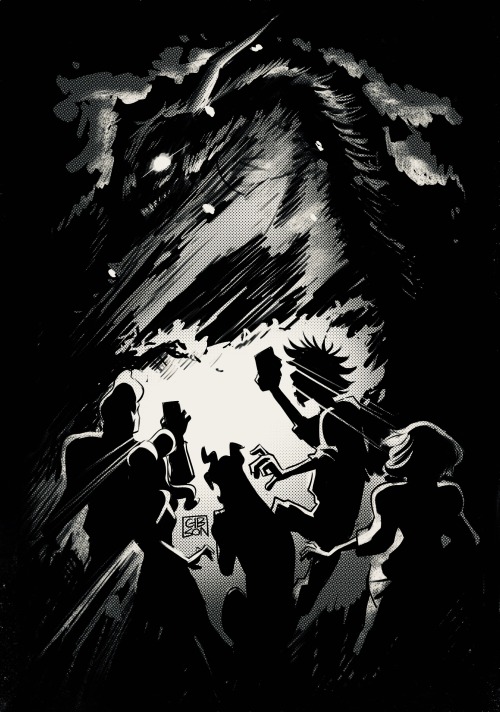

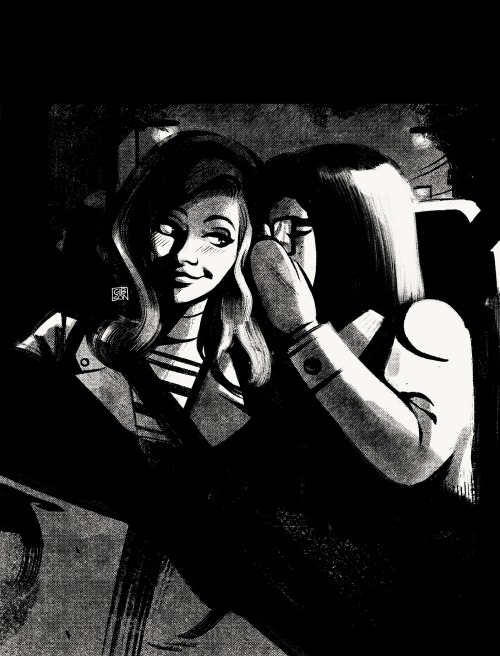


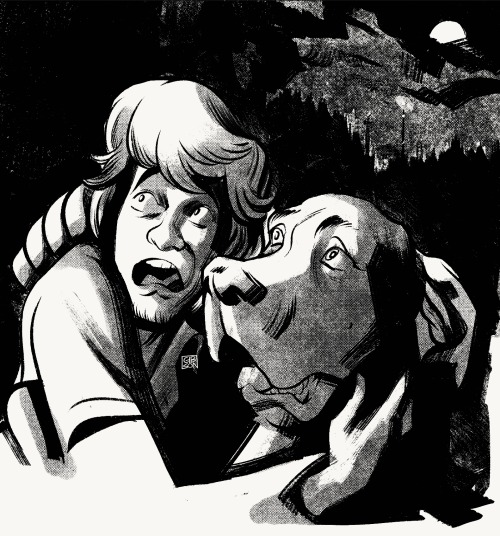
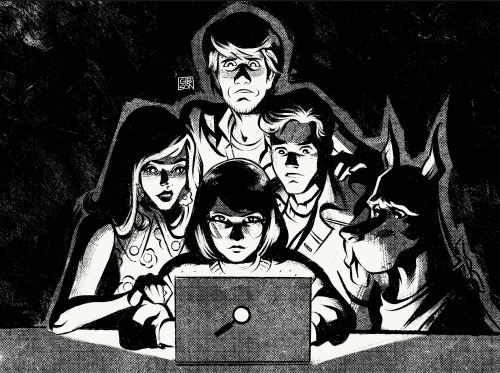
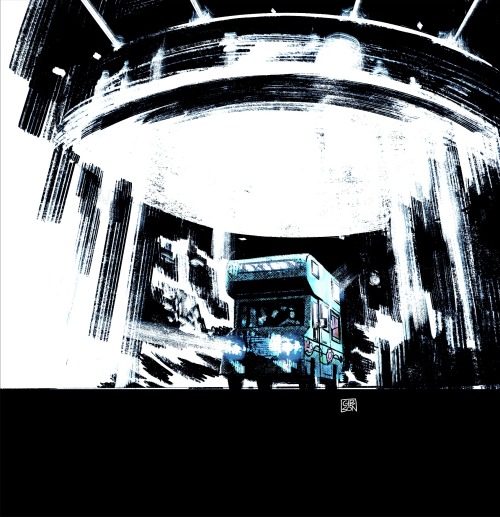
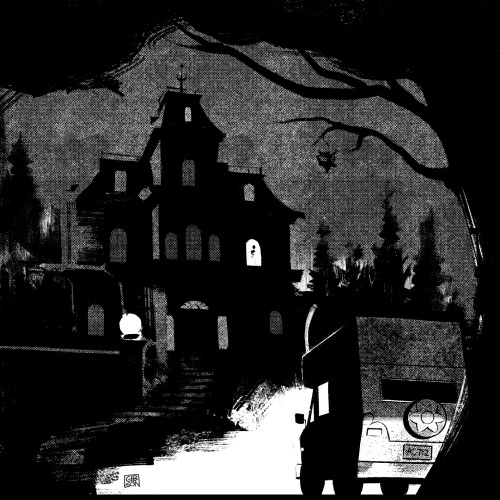
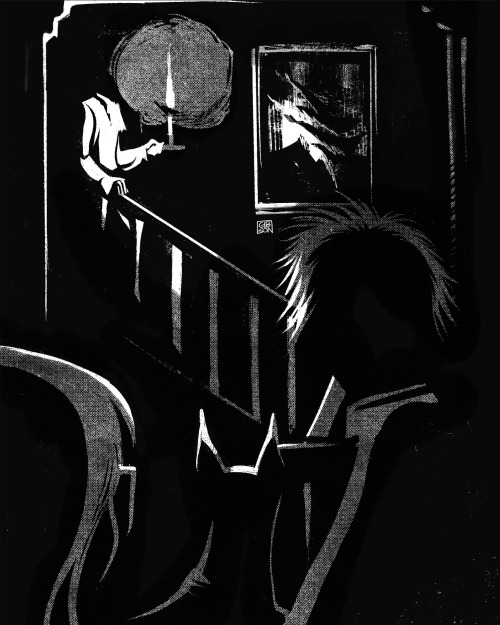
Mystery Inctober, #1-10
instagram | storenvy | portfolio | twitter
Writing Tips/What Beta Readers Taught Me
Since I’ve been learning a lot from my beta readers, I’d thought I’d share what I’ve learned (and just some general writing tips) here. (Mind you, this is just off the top of my head so not everything from the beta notes is included.)
- Besides themes find the “glue” that hold your story together. For example, in Avatar: The Last Airbender, the glue was the Fire Nation War (and trying to stop it). This main goal was present throughout all four seasons, including in the side-quests. All characters had different motivations for teaching Aang, but the war kicked off all the events and was why Aang was learning the elements to begin with.
- In order to help the characters feel more like real people, have them react differently to the same event. For instance, when a character dies, Person A could be sad about it while Person B could be angry.
- Don’t be afraid to extend out scenes for tension.
- Have your character asks questions. Especially if they’re new to a place/culture.
- If you want to do a twist, drop small clues leading up to it, so it won’t come out of nowhere.
- Don’t have the characters share everything with each other.
- For research, try to find a video/source with a first-hand experience. For example, for anxiety, try and find a video with a person talking about what its like to have anxiety.
- It’s always good to have a second pair of eyes of your writing.
- When it comes to descriptions, use the five sense to help draw the reader in. Namely touch, sight, smell, hearing, and taste.
- Have the character’s choices impact the plot, not the other way around. For instance, Aang running off after learning he was the Avatar was what allowed the Fire Nation to succeed in the war.
- Find the main theme of your story (see chart) and revolve everything (character arcs, chapters, etc.;) around it. This will help cut out fluff chapters and make the writing more cohesive.

Some tips for using a few words to describe voices:
1. Tone Words: Use tone words to convey the emotional quality of a voice. For example, you can describe a voice as "melodic," "soothing," "sharp," "gentle," or "commanding" to give readers a sense of the tone.
2. Pitch and Range: Mention the pitch and range of the voice. Is it "deep," "high-pitched," "raspy," or "full-bodied"? This can provide insight into the character's age, gender, or emotional state.
3. Accent and Diction: Describe the character's accent or diction briefly to give a sense of their background or cultural influences. For instance, "British-accented," "Southern drawl," or "formal."
4. Volume: Mention the volume of the voice, whether it's "whispering," "booming," "murmuring," or "hushed."
5. Quality: Use terms like "velvet," "silken," "gravelly," "honeyed," or "crisp" to convey the texture or quality of the voice.
6. Rate of Speech: Describe how fast or slow the character speaks, using words like "rapid," "slurred," "measured," or "rambling."
7. Mood or Emotion: Indicate the mood or emotion carried by the voice. For example, a "quivering" voice may convey fear or anxiety, while a "warm" voice may express comfort and reassurance.
8. Resonance: Describe the resonance of the voice, such as "echoing," "nasal," "booming," or "tinny."
9. Timbre: Mention the timbre of the voice, using words like "rich," "thin," "clear," or "smoky."
10. Cadence: Highlight the rhythm or cadence of speech with descriptors like "staccato," "lilting," "rhythmic," or "halting."
11. Intonation: Convey the character's intonation by saying their voice is "sarcastic," "apologetic," "confident," or "questioning."
12. Vocal Characteristics: If applicable, mention unique vocal characteristics, like a "lisp," "stutter," "drawl," or "accented 'r'."



people have asked me how i draw eyes so i made an extremely slap-dash eye tutorial! this is simply about how i draw a simple neutral eye, nothing to do with expressions (that’s a whole other thing).
start with the horizontal guide on the face, to help place the eyes. put circles where the eyes will go!
adjust the circles into diamond shapes– i got this idea from sinix design on youtube, it’s very helpful and easier to see where the lids should end than with a circle.
draw the top lid/lash lines, leaving a bit of space at the top of the diamond. keep each eye in time with each other– drawing one whole eye first makes it harder to match the other one.
then the bottom lids. i usually try to do all the lid shapes with a single curved stroke each. keep it simple pals!
irises & pupils. sometimes i’ll draw filled-in black circles for the irises, to help figure out where to place them naturally!
lid creases, use the leftover diamond at the top as a loose guide for where to place them. remember that the lid curves around the eyeball.
make adjustments! things don’t always come out perfect immediately. i usually have to thicken the lash line (i like mine quite thick), move the bottom lid up or down, and sometimes resize a whole eye (easier on computer than traditional, i know!). if you’re on a computer make sure to flip your canvas often so you can see these little things ❤
and to practice, just doodle a lot of small eyes! keeping them small makes them easier and faster to finish, so you can focus on your strokes and playing around with shapes, tilt, lid space, all that. don’t worry about making the irises perfect circles/ovals or any of that, just try to capture the character. have fun!
-
 ghostofanonpast reblogged this · 4 weeks ago
ghostofanonpast reblogged this · 4 weeks ago -
 holdtightposts reblogged this · 1 month ago
holdtightposts reblogged this · 1 month ago -
 cloudlesbian liked this · 4 months ago
cloudlesbian liked this · 4 months ago -
 plethodon-uncia reblogged this · 4 months ago
plethodon-uncia reblogged this · 4 months ago -
 fiealwitche liked this · 5 months ago
fiealwitche liked this · 5 months ago -
 holdtightposts reblogged this · 5 months ago
holdtightposts reblogged this · 5 months ago -
 chunky-doggo liked this · 5 months ago
chunky-doggo liked this · 5 months ago -
 fanaroff liked this · 5 months ago
fanaroff liked this · 5 months ago -
 javatunes liked this · 6 months ago
javatunes liked this · 6 months ago -
 glitteryoperatorpatrolwagon liked this · 6 months ago
glitteryoperatorpatrolwagon liked this · 6 months ago -
 getshwifty3030150 liked this · 6 months ago
getshwifty3030150 liked this · 6 months ago -
 terriblefirmness liked this · 6 months ago
terriblefirmness liked this · 6 months ago -
 mrmarstumtum reblogged this · 6 months ago
mrmarstumtum reblogged this · 6 months ago -
 mrmarstumtum liked this · 6 months ago
mrmarstumtum liked this · 6 months ago -
 weantuniverse reblogged this · 6 months ago
weantuniverse reblogged this · 6 months ago -
 mothmanfucker2 reblogged this · 6 months ago
mothmanfucker2 reblogged this · 6 months ago -
 mothmanfucker2 liked this · 6 months ago
mothmanfucker2 liked this · 6 months ago -
 doctorlombax reblogged this · 6 months ago
doctorlombax reblogged this · 6 months ago -
 curioptimist reblogged this · 6 months ago
curioptimist reblogged this · 6 months ago -
 ledbet reblogged this · 6 months ago
ledbet reblogged this · 6 months ago -
 the-most-adorkable-smile reblogged this · 6 months ago
the-most-adorkable-smile reblogged this · 6 months ago -
 yeahdotjpeg reblogged this · 6 months ago
yeahdotjpeg reblogged this · 6 months ago -
 yeahdotjpeg liked this · 6 months ago
yeahdotjpeg liked this · 6 months ago -
 thingsforshaun reblogged this · 7 months ago
thingsforshaun reblogged this · 7 months ago -
 rhuemis liked this · 7 months ago
rhuemis liked this · 7 months ago -
 bobross5027 reblogged this · 7 months ago
bobross5027 reblogged this · 7 months ago -
 bobross5027 liked this · 7 months ago
bobross5027 liked this · 7 months ago -
 chickalupe liked this · 8 months ago
chickalupe liked this · 8 months ago -
 codarrareyn reblogged this · 8 months ago
codarrareyn reblogged this · 8 months ago -
 scopophilic1997 liked this · 8 months ago
scopophilic1997 liked this · 8 months ago -
 3hecate liked this · 8 months ago
3hecate liked this · 8 months ago -
 aleclikescake reblogged this · 8 months ago
aleclikescake reblogged this · 8 months ago -
 aleclikescake liked this · 8 months ago
aleclikescake liked this · 8 months ago -
 bbylungxx reblogged this · 8 months ago
bbylungxx reblogged this · 8 months ago -
 i-need-glitter liked this · 8 months ago
i-need-glitter liked this · 8 months ago -
 thefullteal liked this · 8 months ago
thefullteal liked this · 8 months ago -
 buildinghp liked this · 8 months ago
buildinghp liked this · 8 months ago -
 unawakening-float07 reblogged this · 8 months ago
unawakening-float07 reblogged this · 8 months ago -
 something-something-the-big-gay reblogged this · 8 months ago
something-something-the-big-gay reblogged this · 8 months ago -
 something-something-the-big-gay liked this · 8 months ago
something-something-the-big-gay liked this · 8 months ago -
 autisticfishlizard liked this · 8 months ago
autisticfishlizard liked this · 8 months ago -
 helloevad liked this · 8 months ago
helloevad liked this · 8 months ago -
 sonjab608 liked this · 8 months ago
sonjab608 liked this · 8 months ago -
 nomina--sunt--odiosa liked this · 8 months ago
nomina--sunt--odiosa liked this · 8 months ago -
 mikehellrs reblogged this · 8 months ago
mikehellrs reblogged this · 8 months ago -
 mikehellrs liked this · 8 months ago
mikehellrs liked this · 8 months ago -
 tandaforever liked this · 8 months ago
tandaforever liked this · 8 months ago -
 sickfuck666 liked this · 8 months ago
sickfuck666 liked this · 8 months ago -
 troyminos reblogged this · 8 months ago
troyminos reblogged this · 8 months ago

